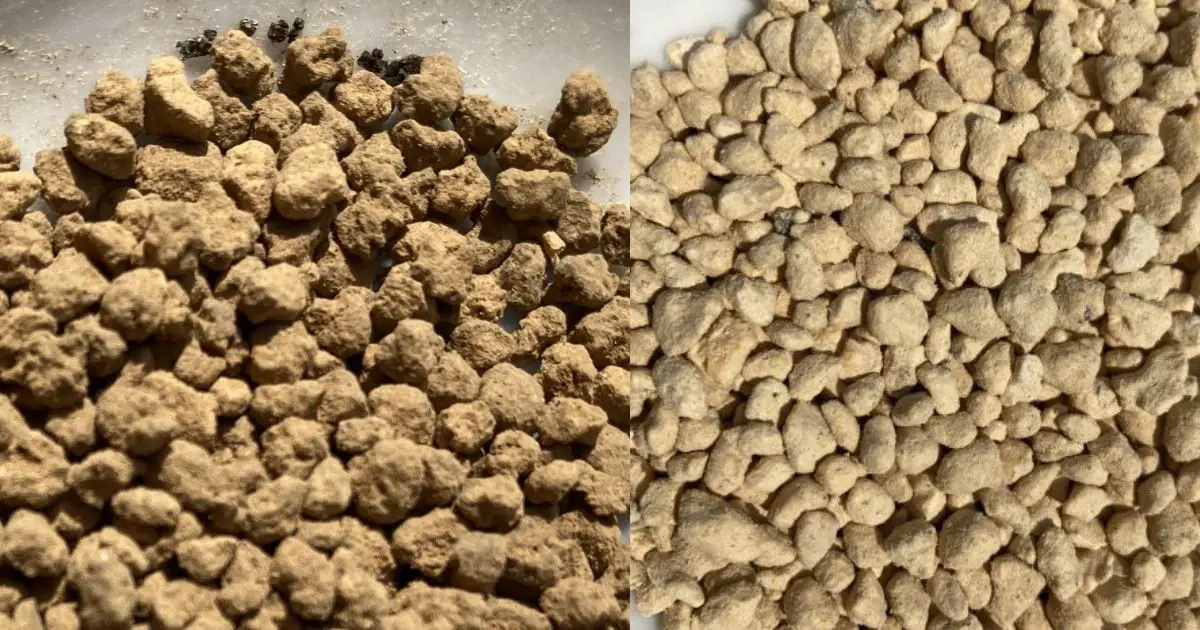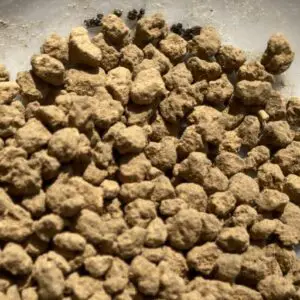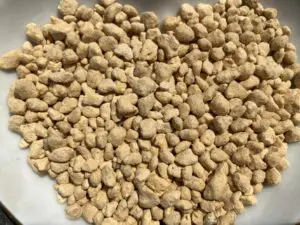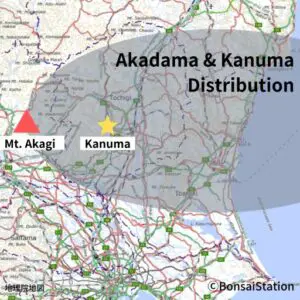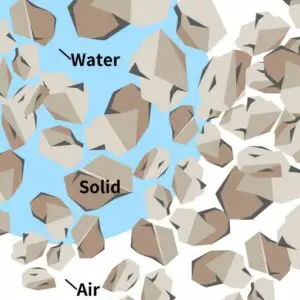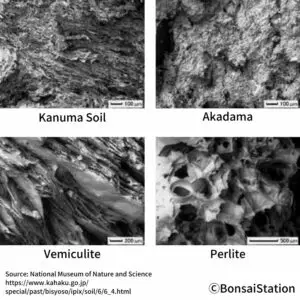- Akadama vs. Kanuma soil: summary in tables
- Akadama vs Kanuma soil : a complete comparison
- What is Akadama and Kanuma soil?
- Where are Akadama and Kanuma soil found underground?
- Akadama vs. Kanuma: physical properties of Akadama
- Akadama vs. Kanuma: percentage of solid, water and air
- Akadama vs. Kanuma: porosity
- Akadama vs. Kanuma: water retention and drainage
- Akadama vs. Kanuma: acidity
- Akadama vs. Kanuma: soil organic matter and ability to store nutrients
Akadama vs. Kanuma soil: summary in tables
Akadama vs. Kanuma soil: apprearance
※Click to enlarge
Akadama vs. Kanuma soil: side-by-side comparison
| Akadama | Kanuma soil | |
| Soil type | Volcanic soil | Volcanic pumice |
| Appearance | Granular & clay-like | Granular & clay-like |
| Color | Brick red | Pale yellow |
| Grain size in nature | 0.1-0.4 inches | 0.1-0.4 inches |
| Texture | Rough & coarse | Rough & coarse |
| Water-holding capacity | High | High |
| Aeration | High | High |
| Drainage | High | High |
| Soil organic matter level | Low | Low |
| Ability to store nutrients | High | High |
| pH | 5.1-5.5 | 5.0-5.5 |
Akadama vs. Kanuma soil in comparison
| Water-holding capacity | Akadama = Kanuma soil |
| Aeration | Akadama = Kanuma soil |
| Drainage | Akadama > Kanuma soil |
| Soil organic matter level | Akadama = Kanuma soil |
| Ability to store nutrients | Akadama > Kanuma soil |
| pH | Akadama less acid < Kanuma more acid |
Akadama vs Kanuma soil : a complete comparison
What is Akadama and Kanuma soil?
Akadama
Akadama is a granular clay-like mineral used mainly as soil for bonsai trees. It is volcanic ash in a grain-like form.
Akadama in Japanese literally means “red grain” because it is brick red in color and naturally in a grain-like shape, with a size of 0.1-0.4 inches on average (some are larger or smaller).
Kanuma soil
Kanuma soil is a granular clay-like mineral used mainly as soil for bonsai trees. It is a weathered volcanic pumice stone.
Kanuma soil is pale yellow in color when it is dry and is small particles of eroded rock with a size of 0.1-0.4 inches on average. The name “Kanuma” comes from the name of the city, Kanuma, 90 miles north of Tokyo, where Kanuma soil is mainly mined.
Where are Akadama and Kanuma soil found underground?
Where underground?
Akadama is deposited on top of the Kanuma soil layer. In fact, they are found together in the same area, just in different layers.
Akadama is deposited just under the lava soil layer about 1.5 feet below the ground with a thickness of 6.5 feet on average as shown in the picture below. Kanuma soil is found under this Akadama layer with a thickness of 3 feet on average.
When formed?
Akadama and Kanuma soil layers are formed when Mt. Akagi erupted (red triangle on the picture above) with pumice about 30,000 to 40,000 years ago and was brought by the wind blowing towards the east.
Which area in particular?
While Akadama and Kanuma soil are found in the vast area on the east side of Mt. Akagi, the soils dug around the areas of Mt. Akagi (Gunma Prefecture) and Kanuma City (Tochigi Prefecture) are known to have the best quality.
The soils further away from these areas are more brittle and cannot hold the grain-like form for long, especially when repeatedly watered and dried.
Double Line Akadama Soil Large Grain
This Double Red Line Akamada above, though it is from Ibaraki (further away), is a very well-known brand that has top-quality, hard-to-break Akadama and is widely used by bonsai enthusiasts in Japan and worldwide. It is quite expensive but it is worth your while.
That said, there are a few affordable alternatives to Akadama. If you are interested, please check the following post.
Akadama vs. Kanuma: physical properties of Akadama
Kanuma soil is richer in silicon than Akadama, which is beneficial for plants especially under stress conditions such as salt and drought.
(numbers in %)
| Akadama | Kanuma | |
| Silicon dioxide | 39.6 | 58.6 |
| Aluminum oxide | 24.6 | 17.1 |
| Ferric oxide | 9.0 | 1.93 |
| Magnesium oxide | 2.2 | 0.076 |
| Calcium oxide | 0.88 | 0.044 |
| Manganese oxide | 0.14 | 0.041 |
(Source: Tachikawa Heiwa Noen Co., Ltd.- link here)
Akadama vs. Kanuma: percentage of solid, water and air
Components of soil
Soil consists of (1) solid particles, (2) water and (3) air.
The void space between the solid particles is filled partly with water and partly with air. If we completely dry the soil, the voids are filled with air only. If we saturate the soil perfectly, on the other hand, the voids are filled completely with water.
% of soil composition
In the natural state, Kanuma soil contains a higher amount of water and less amount of air compared to Akadama. Both Akadama and Kanuma soil contain little amount of solid, as opposed to river sand which contains about 60% of solid in its mass.
Three phases of soils (%)
| Akadama | Kanuma soil | |
| Solid | 18.79 | 10.31 |
| Water | 43.56 | 70.87 |
| Air | 37.65 | 18.83 |
(Source: Gifu University- link here)
Akadama vs. Kanuma: porosity
Both Akadama and Kanuma soil are very porous with intra- and inter-particle gaps inside. Watching through the electric microscope, we can see the pores closely as below. Those pores allow air and water to go through at a high rate.
※Click to enlarge
Akadama vs. Kanuma: water retention and drainage
While the water-holding capacity of Akadama and Kanuma soil is high and about the same level, Akadama drains water at a much higher rate than Kanuma soil.
Below is the result of an experiment about water retention and drainage on Akadama and Kanuma soil conducted by scientists.
| Akadama | Kanuma soil | |
| Water retention (g/100ml) | 44 | 49 |
| Drainage (ml/min) | 649 | 403 |
(Source: Yoki ASANO, Mitsuru IKEDA, Miyo RYUNO. Development of a Simple Method for Measuring Physical Properties of Soil and Preparation of Clop Culture Soils Exhibiting Different Water Permeability. Journal of the Japan Society of Technology Education. 2017, Volume 59, Issue 3, Pages 229-235. Link here.)
For the details of the experiment, please refer to another post in the Bonsai Station below.
Akadama vs. Kanuma: acidity
Both Akadama and Kanuma soil are moderately acidic with pH of 5.1-5.5 and 5.0-5.5, respectively.
It is said that Kanuma soil becomes more acidic like pH 4.0 when used as soil for plants but there is no research supporting this theory. When they are dug out of the ground, both have about the same level of acidity.
Akadama vs. Kanuma: soil organic matter and ability to store nutrients
Soil organic matter
Both Akadama and Kanuma soil contain almost no organic matter as they are in fact weathered volcanic pumice.
Ability to store nutrients
On the other hand, Akadama and Kanuma soil can usually store nutrients very well. One thing different about Kanuma soil is that it has less ability to store phosphorous than Akadama. So, when you make a bonsai soil mixture, you should mix a type of soil that can absorb phosphorous well to cover this shortcoming.
—–
For more details about Kanuma soil, please refer to another post in the Bonsai Station below.

